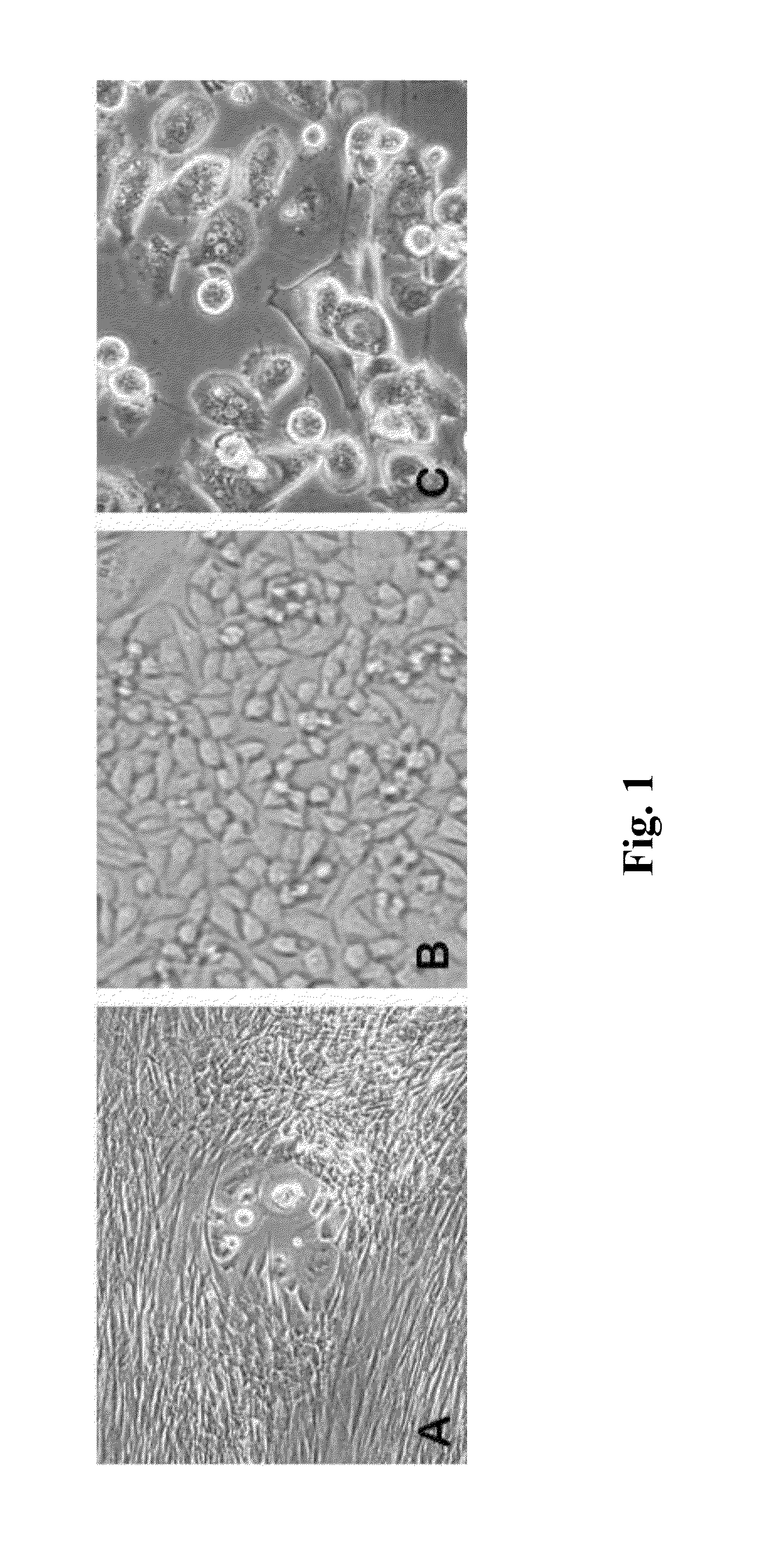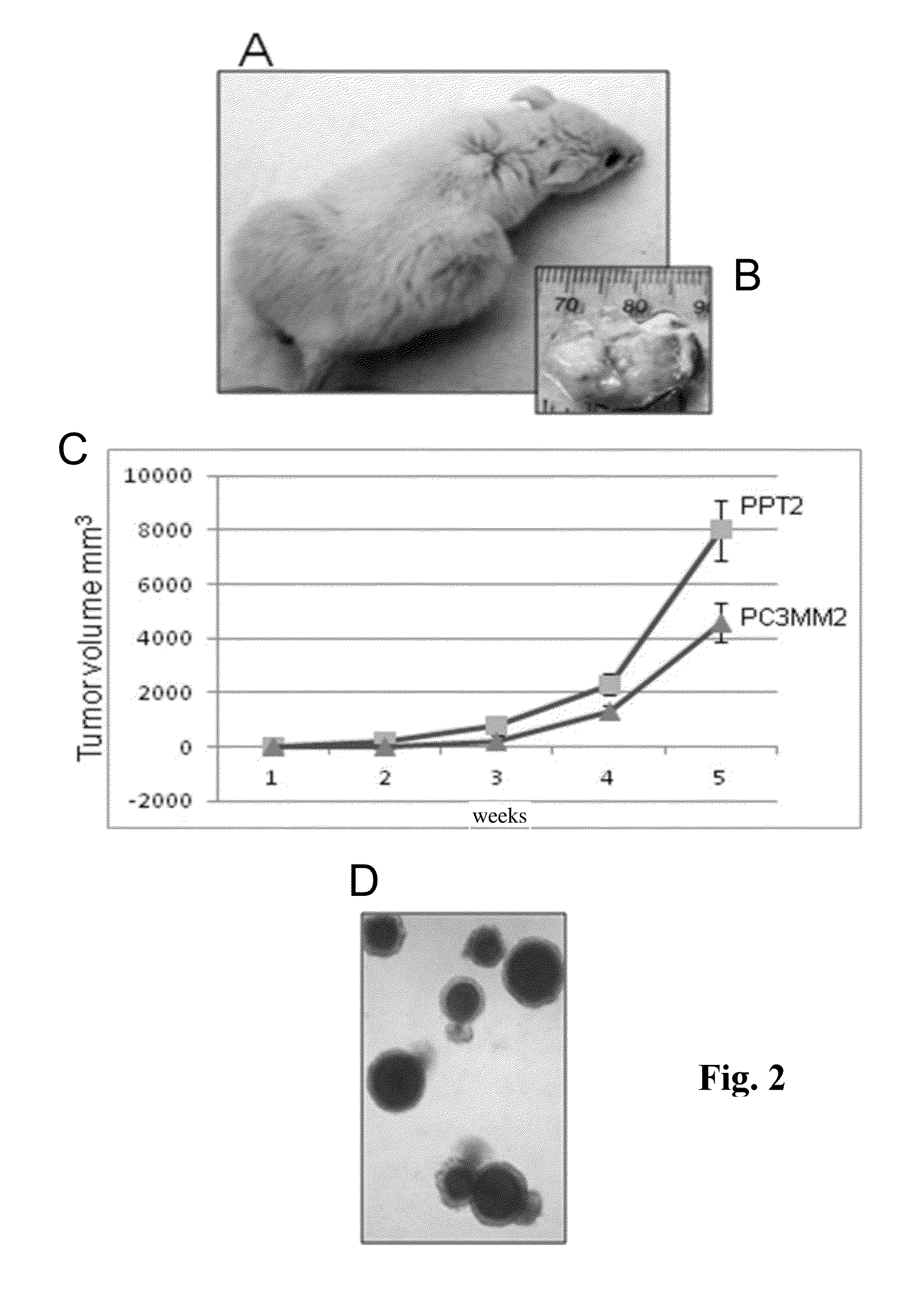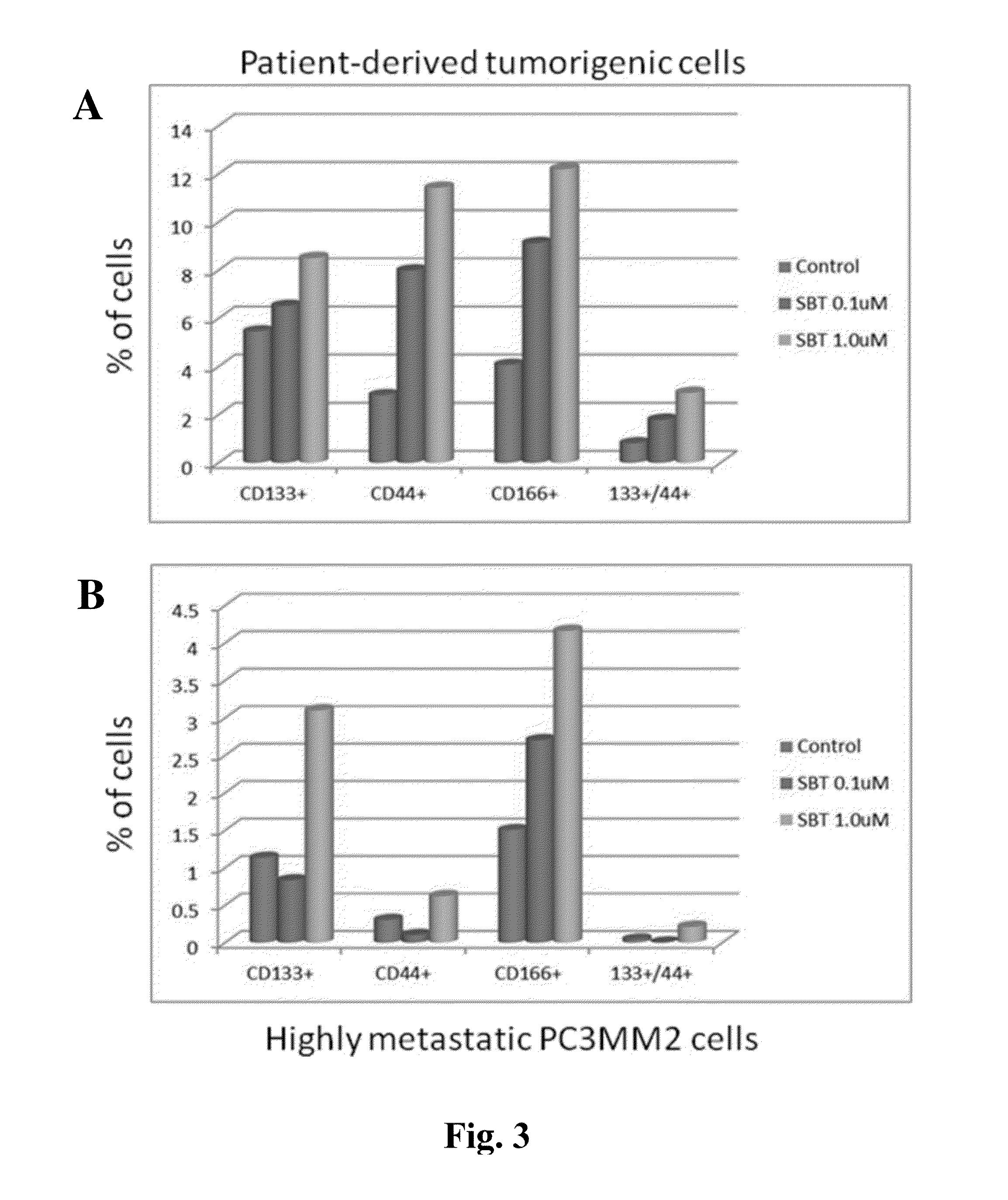Spontaneously immortalized prostate cancer cell line
- Summary
- Abstract
- Description
- Claims
- Application Information
AI Technical Summary
Benefits of technology
Problems solved by technology
Method used
Image
Examples
example 1
Establishment and Characterization of the Primary Prostate Cancer Cell Line PPT2
[0073]Needle biopsies were taken from otherwise discarded surgical waste (removed prostate glands) from operations already scheduled by their physicians for clinical care, in accordance with National Institute of Health guidelines. The prostate gland from which the parental cells were isolated was removed from a stage pT2c pNX pMX prostate cancer patient as a part of routine care for prostate cancer. Pathological staging: pT2—tumor invades beyond the organ or tissue or origin; pT2c—tumor affects both lobes; pNX—regional lymph nodes cannot be assessed; pMX—presence of distant metastasis cannot be assessed.
[0074]Needle biopsies were immediately digested with a cocktail of collagenases and antibiotics. First, tumor biopsies were minced with scissors into approximately 2 mm fragments (all procedures were carried out at sterile conditions), rinsed with Hank's balanced salt solution (HBSS) and incubated for 2 ...
example 2
Establishment and Characterization of Highly Clonogenic PPT2 Cells
[0082]Approximately 8 months after the establishment of the parental PPT2 cell line, during which time multiple cell sortings and serial transplantation to the NOD / SCID mice were performed (as described in Example 1), a new subpopulation of small immature cells appeared as a round colonies (holoclones) surrounded by spindle-like much larger cells (FIG. 5A). The clonogenic and sphere-forming capacity of these cells is so high that the floating multicellular spheroids can be formed not only under non-adherent conditions, but also above the cells adherent to type I collagen (FIGS. 5B, C) and then detached (FIG. 5D). The pluripotent nature of the spheroid cells was confirmed by the following experiment: after plating of such spheroids on type I collagen-coated surfaces, new round colonies of small cells surrounded by larger spindle-like cells were formed (FIG. 6A-D).
[0083]After clonal isolation, purification and propagati...
PUM
| Property | Measurement | Unit |
|---|---|---|
| Fraction | aaaaa | aaaaa |
| Fraction | aaaaa | aaaaa |
| Fraction | aaaaa | aaaaa |
Abstract
Description
Claims
Application Information
 Login to View More
Login to View More - R&D
- Intellectual Property
- Life Sciences
- Materials
- Tech Scout
- Unparalleled Data Quality
- Higher Quality Content
- 60% Fewer Hallucinations
Browse by: Latest US Patents, China's latest patents, Technical Efficacy Thesaurus, Application Domain, Technology Topic, Popular Technical Reports.
© 2025 PatSnap. All rights reserved.Legal|Privacy policy|Modern Slavery Act Transparency Statement|Sitemap|About US| Contact US: help@patsnap.com



